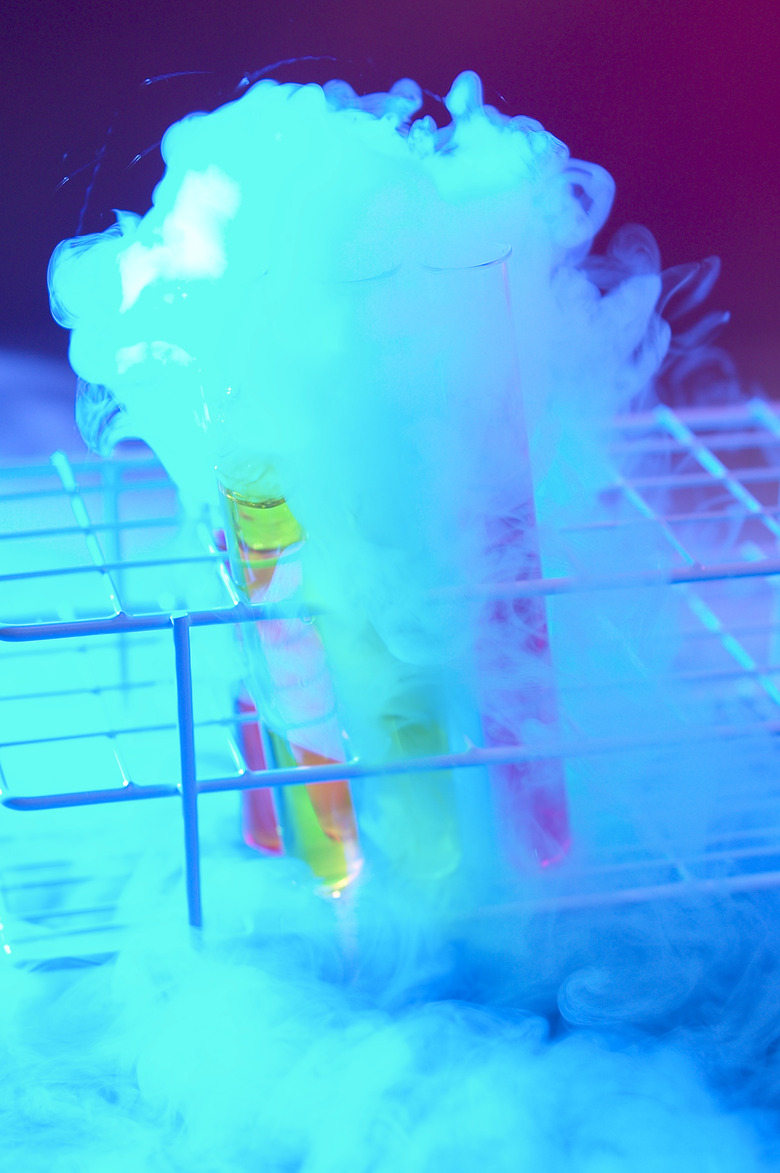The Highest Partial Pressure Of Oxygen In The Circulatory System
Partial pressure is a measurement of the amount of force exerted by one particular substance in a mixture. Blood contains a mixture of gases, each of which exert pressure on the sides of the blood vessels. The most important gases in the blood are oxygen and carbon dioxide, and knowledge of their partial pressures can provide important information about the body. Gas pressure is measured in millimeters of mercury, or mmHg.
Measurement
Measurement
An estimation of the partial pressure of oxygen can be obtained from a pulse oximeter. This is a finger clip device that analyzes how light travels through the tip of the finger. The light will be reflected differently by blood cells with or without oxygen. A more reliable method for measuring blood oxygen involves drawing arterial blood, usually from the wrist. This can be slightly more painful than having blood drawn from a vein. The partial pressure of oxygen in the blood is analyzed using a laboratory instrument such as a mass spectrometer. There are several units for expressing the pressure of a gas, but the unit used most often in medicine is millimeters of mercury.
Diffusion and Partial Pressure
Diffusion and Partial Pressure
Partial pressure describes the amount of pressure exerted by one particular gas in a mixture of gases, such as in the blood. The higher the concentration of a gas, the higher the pressure it will exert. When the partial pressure of a gas in two adjacent areas is unequal, the gas will naturally diffuse from the area of higher concentration to the area of lower concentration, thus establishing equilibrium. This principle governs the way gases, such as oxygen and carbon dioxide, are picked up, transported and delivered by the human circulatory system. These gases are primarily exchanged in two places — the capillary beds that surround each body cell and the capillary beds that surround each alveolus in the lungs.
Pulmonary and Systemic Circulation
Pulmonary and Systemic Circulation
Pulmonary circulation involves the movement of blood between the heart and the lungs. Systemic circulation is the movement of blood between the heart and the body cells. Gas exchange occurs on both of these pathways. When blood reaches the body cells, it drops off oxygen and picks up the waste product carbon dioxide. When blood reaches the lungs, it drops off the carbon dioxide and picks up a fresh supply of oxygen. These two pathways of blood circulation occur simultaneously with each heartbeat.
Highest Partial Pressure of Oxygen
Highest Partial Pressure of Oxygen
When blood reaches the lungs through the pulmonary arteries, it has delivered oxygen to the body cells and picked up carbon dioxide, a waste product produced during respiration. Here, the partial pressure of oxygen is very low, typically 40 millimeters of mercury. This allows oxygen gas to naturally diffuse from the alveoli in the lungs into the capillaries of the circulatory system. The blood then leaves the lungs with a fresh supply of oxygen to begin its journey again. It is at this point, in the pulmonary veins that carry blood away from the lungs and back to the heart, that the partial pressure of oxygen is highest, typically 100 millimeters of mercury.
Oxygen Saturation
Oxygen Saturation
The partial pressure of oxygen is a measurement of the blood's oxygen saturation level. For optimal tissue health, a constant level of oxygen saturation above 90 percent should be maintained. This correlates to an arterial partial pressure of 100 millimeters of mercury. An arterial pressure for oxygen that falls below 80 millimeters of mercury can be harmful to the body. Decreased partial pressure is a sign of hypoxia, or a lack of oxygen, and is often indicated by shortness of breath. This condition can be caused by many things, including cardiac arrest, suffocation, and carbon monoxide poisoning. Prolonged hypoxia can cause permanent damage to body cells.
References
Cite This Article
MLA
Yadav, Jennifer. "The Highest Partial Pressure Of Oxygen In The Circulatory System" sciencing.com, https://www.sciencing.com/highest-partial-pressure-oxygen-circulatory-system-15950/. 13 March 2018.
APA
Yadav, Jennifer. (2018, March 13). The Highest Partial Pressure Of Oxygen In The Circulatory System. sciencing.com. Retrieved from https://www.sciencing.com/highest-partial-pressure-oxygen-circulatory-system-15950/
Chicago
Yadav, Jennifer. The Highest Partial Pressure Of Oxygen In The Circulatory System last modified March 24, 2022. https://www.sciencing.com/highest-partial-pressure-oxygen-circulatory-system-15950/
